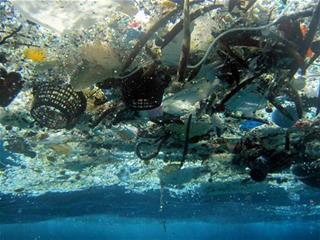
A Big Ocean Dump
“We saw the debris everywhere. Every half second you see something…It was bizarre to see that much garbage in what should be pristine ocean.”
These were the provoking statements from the Ocean Cleanup founder Boyan Slat to The Guardian following the foundation’s recent assessment of the so-called “Great Pacific garbage patch,” a large mass of plastic between Hawaii and California. The group used LIDAR (laser) scanners and multispectral camera technology to collect data on the patch in preparation for a large-scale conservation and cleanup mission that is scheduled for 2020. What they found was far worse than they expected.
According to the report from The Guardian, the dense heart of the garbage patch is thought to be around 1 million square kilometers (386,000 square miles) in size with the periphery extending 3.5 million square kilometers (1,351,000 square miles) farther. That means this growing plastic waste flotilla’s size is just under that of the European Union.
In addition to its growing size, the Ocean Cleanup made a discovery regarding the patch’s composition. While they knew it was full of broken-up plastics, often no larger than the size of a human fingernail, that could easily be ingested by sea creatures, the new data collected shows that there are far more larger pieces than previously thought, creating a “ticking time bomb” of materials that will eventually break down into micro plastics, according to Slat.

Defining The Anthropocene Epoch
Over the last century, humans have filled the oceans with plastic, pumped carbon dioxide into the air, and raked acids over the soil. The impact of our species is so severe and so enduring that the current geological time period could soon be declared the “Anthropocene.”
But the age of the Anthropocene need not be a dark time in history. Already, a lot of new technology aiming to address the state of the environment has emerged. The Ocean Cleanup plans to use a crowdfunded v-shaped boom 100 kilometers (62 miles) long as an artificial coastline to sweep out and collect waste from the waters, and this aquatic drone that gobbles up garbage has also gotten quite a bit of buzz.
More than ever, we need to come together to protect the Earth. While removing the large amount of waste currently floating in our oceans is one part of that, preventing future dumping is even more important. “We need to clean it up, but we also need to prevent so much entering the oceans,” says Slat. “Better recycling, better product design and some legislation is all part of that. We need a combination of things.”